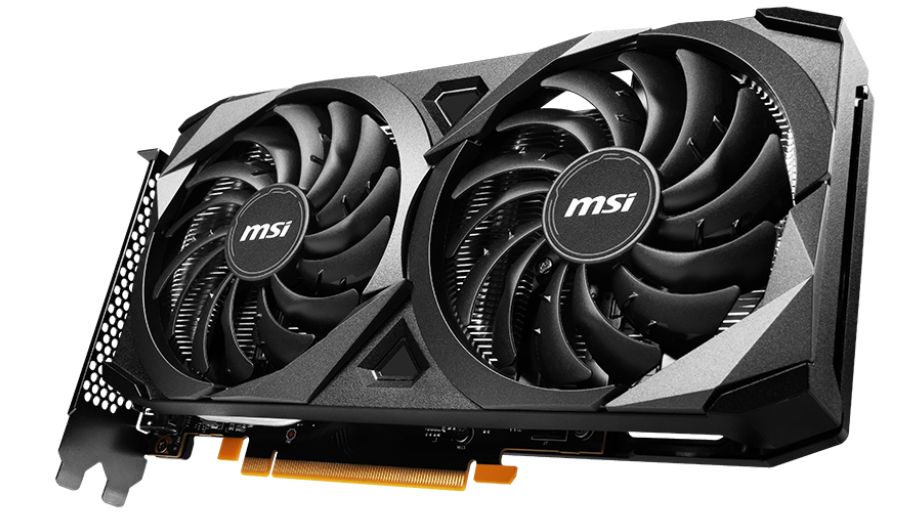Nvidia RTX 3050 Refresh Sports New Chip with Lower TDP

Nvidia is making a small, power-saving tweak to its entry-level GPU. The chipmaker has refreshed the GeForce RTX 3050, which sits two places below the last-gen RTX 2060 on our GPU benchmarks hierarchy, lowering the budget card’s TDP by 15W.
Nvidia had previously launched two variants of the GeForce RTX 3050 based on the GA106 silicon. The retail GeForce RTX 3050 comes with 2,560 CUDA cores, whereas the GeForce RTX 3050 OEM has 2,304 CUDA cores and slightly lower clock speeds. The third and new variant appears to use the GA107 silicon instead of the GA106 silicon while boasting a lower TDP.
The GA106 silicon has 30 Streaming Multiprocessors (SMs), amounting to 3,840 CUDA cores. It has more than enough firepower for a GeForce RTX 3050. On the other hand, the GA107 silicon is smaller and only houses 2,560. Therefore, it’s a perfect fit for the GeForce RTX 3050. The switch to the GA107 silicon will allow Nvidia to reduce the production cost for a GeForce RTX 3050. Alternatively, the chipmaker may have a lot of leftover GA107 silicon that it needs to get rid of.
GeForce RTX 3050 GA107 Specifications
| Header Cell – Column 0 | GeForce RTX 3050 GA107 | GeForce RTX 3050 | GeForce RTX 3050 OEM |
|---|---|---|---|
| GPU | GA107 | GA106 | GA106 |
| CUDA Cores | 2,560 | 2,560 | 2,304 |
| Tensor Cores | 80 | 80 | 72 |
| RT Cores | 20 | 20 | 18 |
| Base Clock (MHz) | 1,552 | 1,552 | 1,515 |
| Boost Clock (MHz) | 1,777 | 1,777 | 1,755 |
| FP32 Performance (TFLOPS) | 9.098 | 9.098 | 8.087 |
| Memory | 8GB GDDR6 | 8GB GDDR6 | 8GB GDDR6 |
| Memory Clock (Gbps) | 14 | 14 | 14 |
| Memory Bus | 128 bit | 128 bit | 128 bit |
| Memory Bandwidth (GBps) | 224 | 224 | 224 |
| TDP (W) | 115 | 130 | 130 |
The GeForce RTX 3050 GA107 shares identical specifications tp the vanilla GeForce RTX 3050. It still has 2,560 CUDA cores, 80 Tensor cores, and 20 RT cores. Both graphics cards seemingly have the same clock speed; therefore, performance should be similar, if not equal. In addition, the memory subsystem remains intact. The GeForce RTX 3050 GA107 still wields 8GB of 14 Gbps GDDR6 memory. Complemented with a 128-bit memory interface, the graphics card can deliver a memory bandwidth that maxes out at 224 GBps. In any version, this card sits at the bottom of Nvidia’s RTX stack and can’t compete with the best graphics cards on the market.
The most notable difference between the GA107 and GA106 models is the TDP. The former has a 115W TDP, whereas the latter has a 130W rating. So we’re looking at a 12{38557cf0372cd7f85c91e7e33cff125558f1277b36a8edbab0100de866181896} reduction due to the simple silicon swap. The TDP decrease isn’t significant enough to warrant a change in power design; a single 6-pin power connector delivers up to 75W, and with another 75W from the PCI slot, the graphics card has 150W at its disposal. However, some manufacturers will take the opportunity to use a different power connector design.
MSI has listed the brand’s new GeForce RTX 3050 Ventus 2X 8G OCV1 (opens in new tab), which sports the GA107 silicon. It has the same 1,807 MHz boost clock as the GeForce RTX 3050 Ventus 2X 8G OC (opens in new tab) and a 15W lower TDP. However, the latest OCV1 variant only relies on a 6-pin power connector compared to the regular model, which has an 8-pin power connector.
Unfortunately, we haven’t found the GeForce RTX 3050 Ventus 2X 8G OCV1 in stock at any U.S. retailer for price comparison with the vanilla model. So it remains to be seen when the die swap will impact the GeForce RTX 3050’s pricing.






